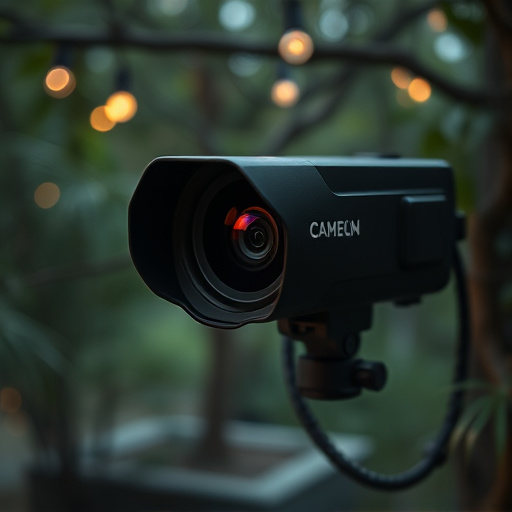Motion-activated spy camera battery life is a paramount consideration for successful covert network installations, especially in remote areas. Choosing cameras with long battery life reduces site visit needs and enhances continuous surveillance. Weatherproof batteries are essential for outdoor use. When planning, consider reliable power sources like wireless solutions or solar panels paired with high-capacity LFP batteries. Regular maintenance, strategic camera placement, and smart charging systems ensure optimal performance and prevent data breaches by adhering to ethical guidelines and minimizing collected data. Efficient battery management is crucial for uninterrupted monitoring and secure surveillance.
In the realm of covert camera networks, installation best practices are paramount to ensure effective surveillance while respecting privacy. This article guides you through essential considerations for successful deployment, focusing on key aspects such as motion-activated spy camera battery life and network infrastructure. By delving into discreet power sources and robust security measures, you’ll learn how to navigate the ethical labyrinth of covert cameras, ensuring optimal performance without compromising privacy rights.
- Understanding Motion Activated Spy Camera Battery Life Requirements
- Network Infrastructure Considerations for Covert Camera Installation
- Best Practices for Discreet and Reliable Power Sources
- Security and Privacy Measures: Ensuring Ethical Implementation of a Covert Camera Network
Understanding Motion Activated Spy Camera Battery Life Requirements
Motion-activated spy cameras, due to their autonomous nature, rely heavily on battery life. A key consideration when planning a covert network installation is selecting cameras with batteries that can withstand prolonged periods between recharges or replacements. The frequency of motion activation and environmental conditions will significantly impact battery longevity. For instance, higher sensitivity leading to more frequent activations will drain power faster.
Therefore, choosing cameras with longer battery life ensures continuous surveillance without the need for frequent site visits. This is particularly crucial in remote or hard-to-reach locations. Additionally, weatherproof batteries that can operate reliably under varying temperatures and humidity levels are essential, especially when installing outdoors.
Network Infrastructure Considerations for Covert Camera Installation
When planning a covert camera network installation, understanding your network infrastructure is paramount. The selection and placement of cameras heavily depend on reliable power sources, especially when considering motion-activated spy cameras that require consistent energy for optimal performance. Hardwired connections offer stable power supply but may pose challenges in discreet installations. Therefore, wireless solutions like battery-powered cameras become attractive alternatives, offering flexibility and ease of deployment. However, these systems demand careful consideration regarding battery life, as extended operation without human intervention could raise suspicions.
To mitigate this, it’s essential to choose cameras with robust batteries and implement energy-saving features. Regular maintenance checks and strategic placement in areas with minimal motion can extend battery lifespan, ensuring the network remains operational while preserving its covert nature. Additionally, integrating smart charging systems that power down cameras during inactive periods further enhances battery life, contributing to a successful and undetected installation.
Best Practices for Discreet and Reliable Power Sources
When planning a covert camera network installation, ensuring reliable and discreet power sources is paramount for long-term success. For outdoor or remote locations, solar panels and high-capacity batteries are ideal choices. Solar energy provides an environmentally friendly and virtually invisible power solution, while deep cycle batteries allow motion-activated spy cameras to operate continuously without frequent charging interruptions.
Consider using lithium iron phosphate (LFP) batteries, known for their superior lifespan and safety compared to traditional lead-acid options. Regularly maintaining these power sources, including cleaning solar panels and checking battery health, is crucial to guarantee optimal performance. Additionally, integrating smart battery management systems can help monitor energy levels, prevent overcharging or deep discharging, and extend the overall lifespan of your covert camera network’s power infrastructure.
Security and Privacy Measures: Ensuring Ethical Implementation of a Covert Camera Network
When implementing a covert camera network, prioritizing security and privacy is paramount. This involves adhering to strict ethical guidelines and legal frameworks governing surveillance practices. One key aspect is ensuring that cameras are only activated when necessary, such as through motion-activated triggers. This minimizes unnecessary data collection and reduces potential privacy intrusions.
Additionally, proper battery life management for motion-activated spy cameras is crucial. Long-lasting batteries or efficient energy-saving measures prevent frequent replacements, ensuring continuous monitoring while respecting the privacy of individuals within the surveillance area. Regular maintenance and secure storage of camera systems further safeguard against unauthorized access, emphasizing the responsible and ethical deployment of covert surveillance technology.
When implementing a covert camera network, prioritizing ethical considerations alongside technical best practices is paramount. Understanding the battery life requirements of motion-activated spy cameras, planning for robust network infrastructure, and selecting discreet power sources are crucial steps to ensure reliability and avoid detection. Moreover, adhering to stringent security and privacy measures will safeguard sensitive data and maintain public trust. By following these guidelines, you can create a concealed surveillance system that strikes an acceptable balance between security enhancement and individual privacy protection.
